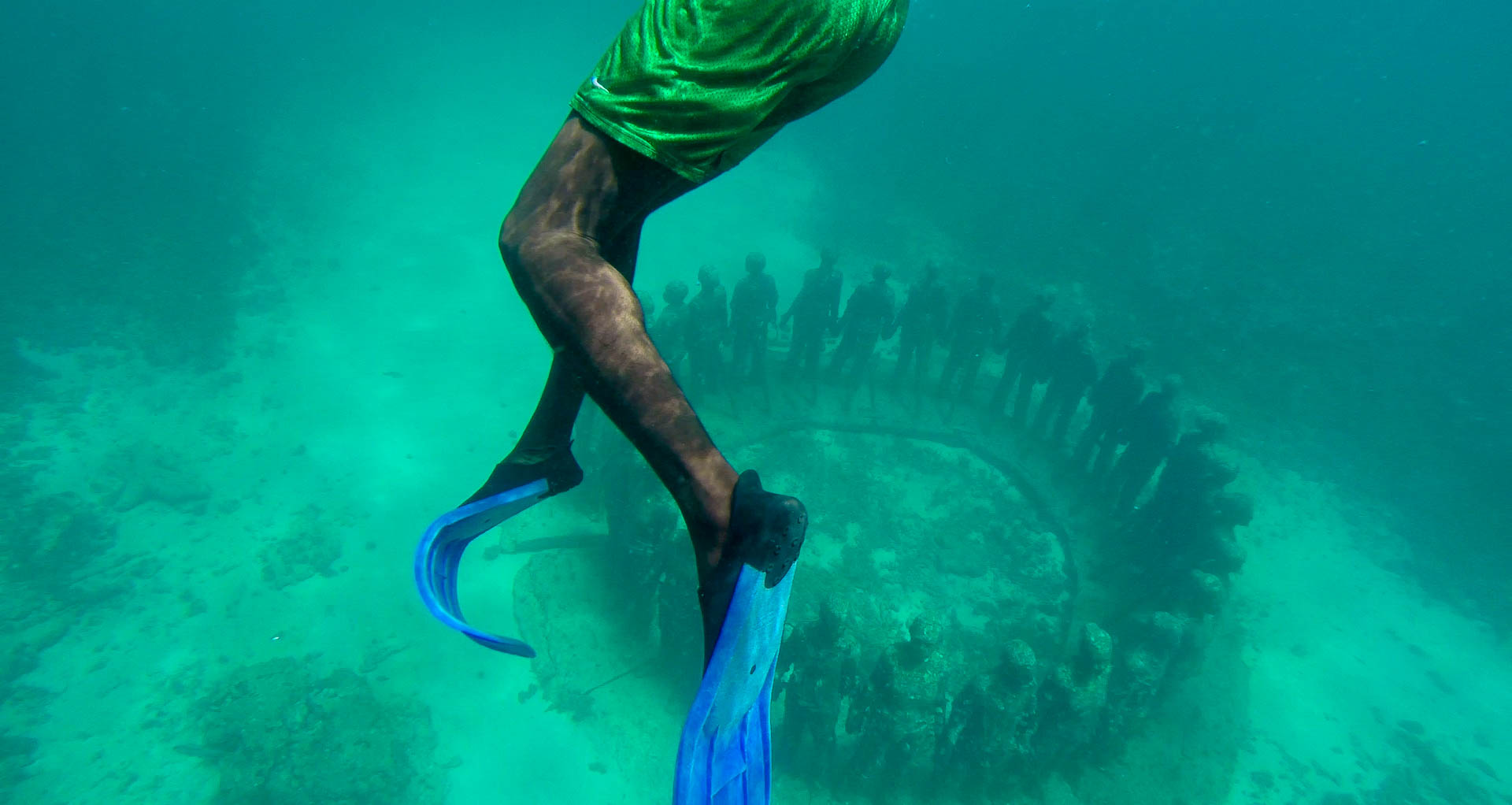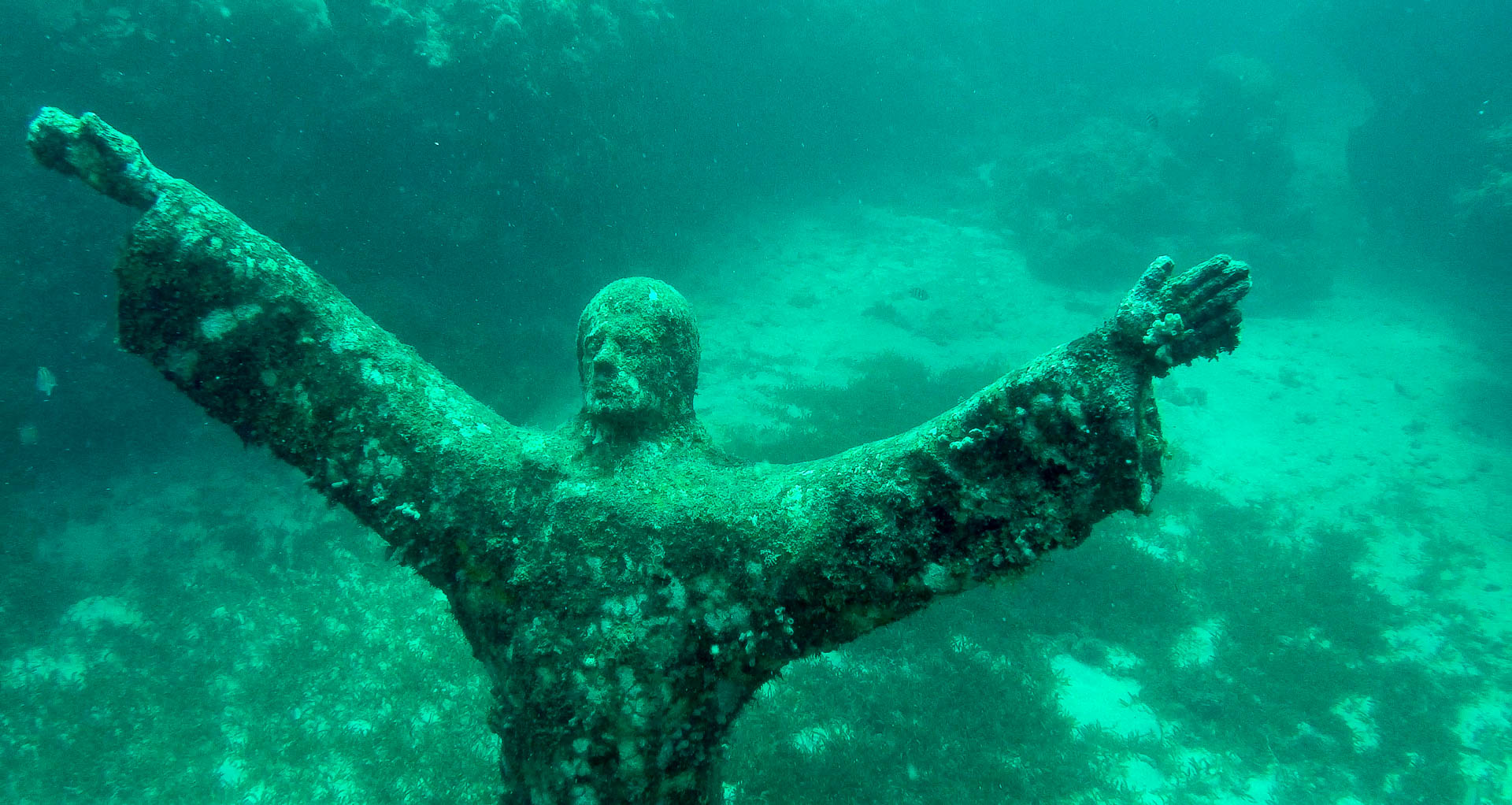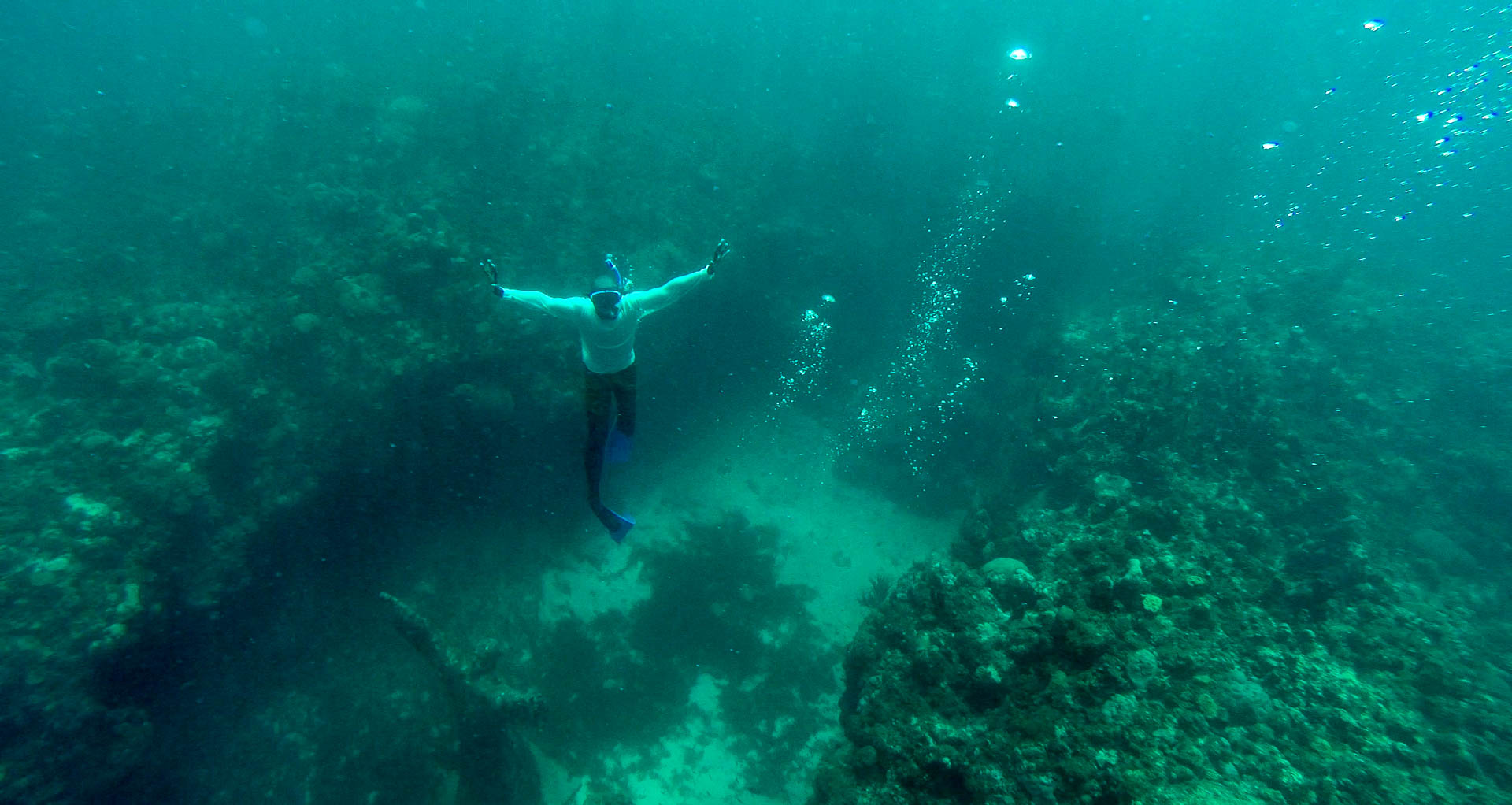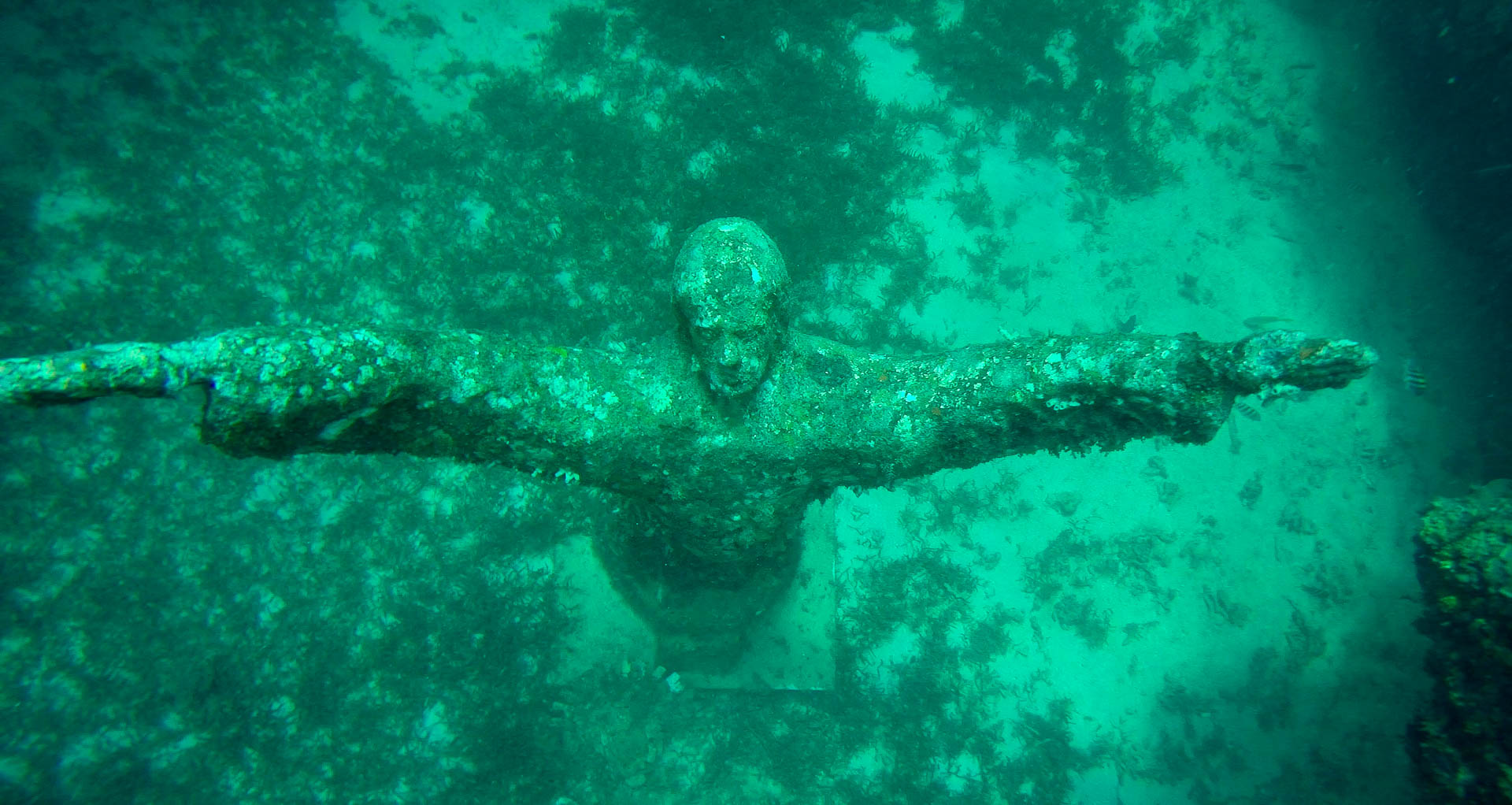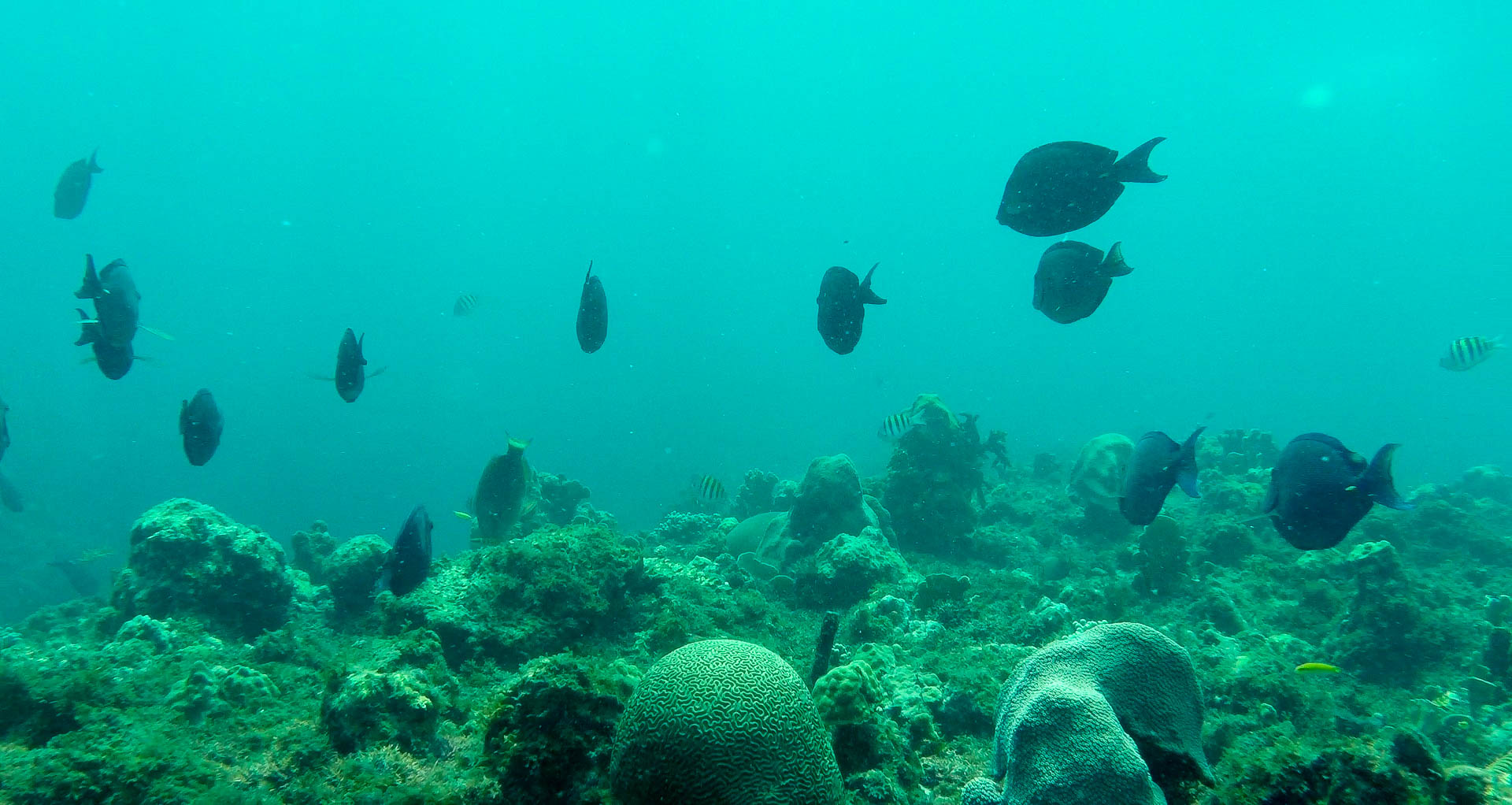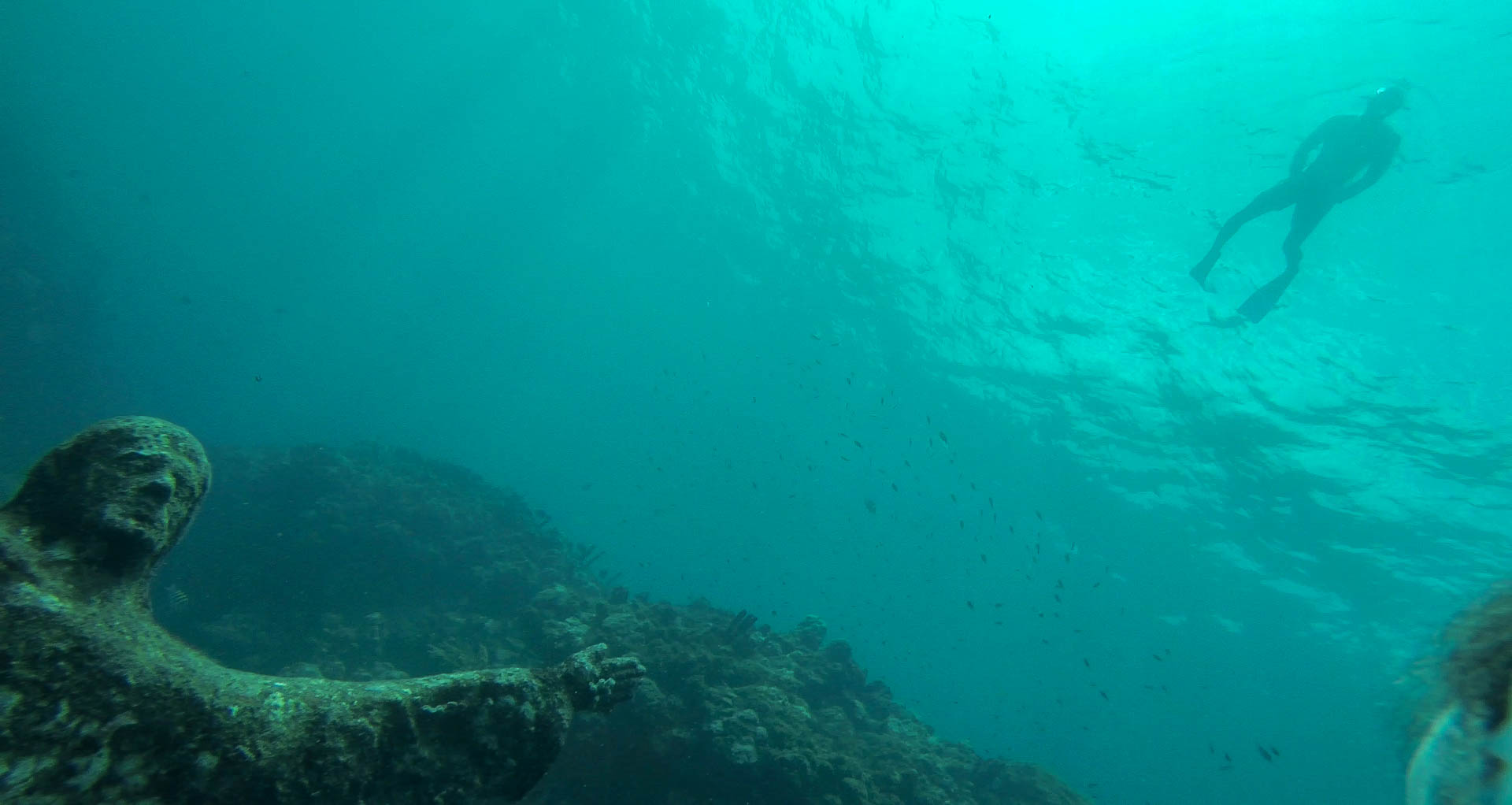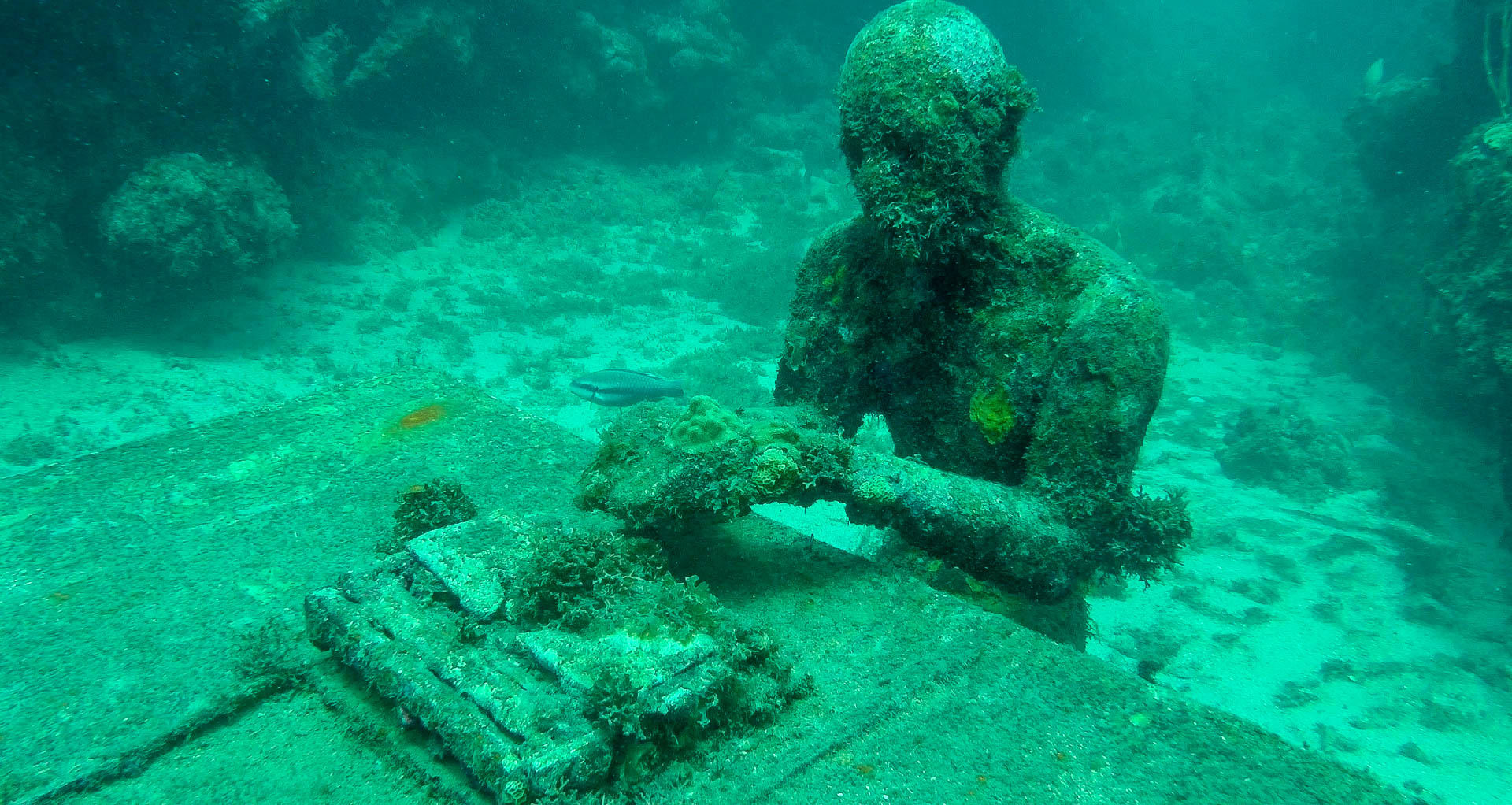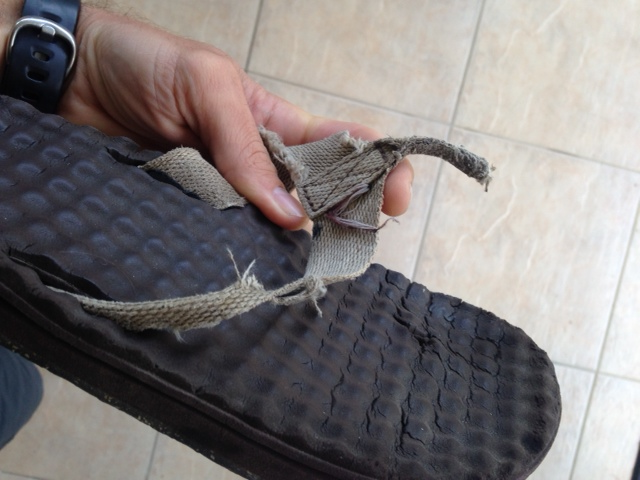By Tom Miller
Leaving Union Island - Video Still, Tom Miller
Speeding toward Carriacou - Video Still, Tom Miller
Carriacou Island, protectorate of Grenada. Photo, Tom Miller
On Sunday morning, OPOE bid a fond farewell to Union Island and the Environmental Attackers. Bitterz, the speedboat, bounced us over the choppy straight to the quiet island of Carriacou and from there, OPOE grabbed the ferry to Grenada. Our driver picked us up at the port and we zipped home to change and gear up to cover the Calypso competition held that evening at the national stadium. We received backstage passes from the Ministry of Tourism and captured some excellent footage of the "Bands", their costumes, and the first 3 of many Calypso singers. We left, exhausted, at midnight. (We found out later that the competition went on until 5AM in the morning.) At 6AM, after a few hours of sleep, our driver dropped us near St. George's Harbor and into the middle of J'Ouvert morning.
Monday, 8/11. Thousands of people from all over the world descend on Grenada for carnival. J'Ouvert morning (meaning dawn/daybreak) is dominated by the Jab Jab. Derived from the French "Diable" - meaning devil - Jab Jab is a "double devil", representing a world between life and death. Carrying chains, scantily dressed, and smeared head to toe in engine oil (in older times, molasses was used), players personify the injustice and horrors of slavery. The scene is disturbing: oil pours from some Jab's mouths as they grind to blasting bass-heavy music, and the aftermath is post apocalyptic. Garbage and rum bottles and oil, slick the street. A devil horned helmet lies in the gutter. Players lay unconscious on the wharf walls, while a greasy, sun-shined film rainbows across the placid harbor.
Real snakes used to be more prevalent at J'Ouvert morning. This young Jab Jab player holds the only real snake we saw - a small one. - Video Still, Tom Miller
Jab Jab player at J'Ouvert, Grenada - Video Still, Tom Miller
Many player held chains, representing enslavement - Video Still, Tom Miller
A player takes a rest - Video Still, Tom Miller
Trucks and floats, laden with speakers, drive slowly down the street as bass heavy music pounds through the crowds. Some players still dance to their own drumming - Video Still, Tom Miller
Unfortunately, at this point, Nuin-Tara was beginning to feel bad (we suspected Chikungunya) and had to return home. Annie and I spent a few hours more walking around and filming the quiet streets and scenery following J'Ouvert morning. Many participants, up since the previous day, took a few hours rest around noon before continuing on to Grande Anse Beach for the parade of the bands. Upon returning home, we found Nuin-Tara had definitely contracted the Gunya.
Originally slated to go to Petite Martinique - a small island off Grenada - OPOE took up residence in Mourne Jaloux, in the hills above St. Georges, and hunkered down for a few days while Nuin-Tara recuperated in an air conditioned room.
On Thursday, Annie and I interviewed Mr. Phillip, former Senior Environment Officer at the Ministry of Environment. Mr. Phillip talked at length about the impacts of climate change in Grenada and agreed to give us a tour of these issues on the ground at his home town of Sauteurs (see entry for Monday, below). After the meeting, Annie and I walked to Fort George which overlooks St. George's Harbor.
In the citadel, Fort George, Grenada. Photo, Tom Miller
Built by the French in 1705 (originally named Fort Royal) the fort went to the British in 1783, with the treaty of Versailles. Most recently, Fort George was occupied by American forces on October 27th, 1983, during the American invasion of Grenada. The invasion was preempted by the execution of People’s Revoltuionary Army leader Maurice Bishop and staff by a radical faction of the PRA. Bishop and 7 supporters were lined up near the basketball posts (one post is pictured in the left of the photo) and shot. The international airport in Grenada bears Bishop's name.
Grenada and Costal Erosion - A Closer Look
By the following Monday, Nuin-Tara was well on the mend, and we wound our way up the western coast, to the very top of the island. We passed bustling beachfront communities with Mainsteets not 50 yards from the ocean. In one community, a massive seawall 8 feet high guarded the town, blocking the ocean from view. Painted in colorful Grenadian reds and greens, it stretched 150 yards along the main road. Remarkably, and thoughtfully, the wall was shaped like a giant bench, its seat, 4 feet off the ground. As we passed we saw some locals perched high up, their legs dangling, chatting and laughing with one another as we drove by.
Sauteurs Bay, the northern tip of Grenada. - Video Still, Tom Miller
We met Mr. Phillip in Sauteurs, his hometown. From there he led us to a bluff overlooking Sauteurs beach and bay. Below, the long but narrow strip of sand stretched away in the distance. We could see a large group of fisherman dragging in a giant net. I was reminded of our interview at the ministry with Mr. Phillip on Thursday. He had told us how the fishermen, years ago, wove their nets with larger holes so the smaller fish could pass through. “Nowadays, the holes are much smaller, and the nets catch everything,” said Mr. Phillip.
“We have the sea level rising. We have erosion, saltwater intrusion. We have a place in Carriacou where the graves…the graves are actually going out to sea.”
From our vantage point on the hill, Mr. Phillip pointed out the signs of erosion. A damaged sea wall to our left; palm trees fallen into the sea, their roots exposed and black; the ruined walls of the old fish market, destroyed by the receding sands. Later, down on the beach, Mr. Phillip told us about sandmining, whereby locals bring their trucks to the shore and fill them up with sand for use as building material. There are laws against sandmining but they are ineffective. “Because everyone in the community knows one other, it makes enforcement very difficult. If you see someone you know taking away the sand from the beach, you’re less likely to report them.”
Compounding the erosion problem is increased wave energy striking the shoreline. Because the offshore reef system has been severely degraded due to hurricane damage and land based pollutants (there is no water treatment facility in the area, so sewage runoff, agricultural fertilizers, even blood from the slaughterhouse all run straight into the ocean and damage the reef) wave energy, once diminished by the offshore reef system, now hits the shoreline with increased intensity. There is a proposal to build a large underwater seawall that would mimic the job of the reef, but funding for that project is still pending.
Mr. Phillip, Sauteurs Beach, Grenada. - Video Still, Tom Miller
Mr. Philip pointed to a small lagoon adjacent to the beach. A few houses could be seen peaking through the trees. He told us that when Ivan came through in 2004, the storm surge flooded the entire area. The people living there were trapped, “and they found themselves cut out from the other areas,” said Mr. Phillip, “and later on they had to be rescued.” Looking down the beach from where we stood, it was clear that there is nothing like the 8-foot barrier we saw driving up protecting this community. The homes in the lagoon have been rebuilt, awaiting the next surge.
We stood looking around, taking in the various problems facing Sauteurs. Mr. Phillip pointed to a spit of land far down the beach. He told us local students planted palm and sea grape there to prevent further erosion. He held out his hands, wrapping things up. “So there you have it. Whatever happens to us would depend on how we treat the resources and how we respond to the challenges we have. We have the sea level rising. We have erosion, saltwater intrusion. We have a place in Carriacou where the graves…the graves are actually going out to sea.” He paused, smiling to himself. “We have to make up our minds to do the right thing.“
Underwater Paradise
On Tuesday, we had the pleasure of interviewing Ms. Martina Duncan, the new
climate change focal point for the Environment Division of the Ministry of Agriculture, Forestry, Fisheries and Environment. After the interview we met up with Mr Roland Baldeo, National Marine Protected Areas Coordinator, Fisheries Division, Ministry of Agriculture, Lands, Forestry, Fisheries & the Environment. Mr. Baldeo introduced us to Chris Alleyne, a patrolman for the Fisheries Division, who took us around for a quick tour before joining us on a dive to Grenada's famous underwater sculpture park.
Before we go...
Shane - Photo, Tom Miller
The Gunya got it - Photo, Tom
...a few addendums to the week: Firstly, OPOE wishes to thank Shane Forrester for the accommodations, info, and the rides. Also thanks to Stanton Gomes for putting us in touch with Shane.
Also important to note this week is that my sandal (finally) succumed to the Gunya. After many years and many trips we parted ways in Grenada. Goodbye good shoes, you will be missed.
Leaving Grenada. Nuin-Tara boarding the plane for Antigua - Photo, Tom Miller
Check out our entire archive below...
-
July 2016
- Jul 12, 2016 New Video: Puruvesi (Ice fishing in Finland) Jul 12, 2016
-
March 2016
- Mar 5, 2016 Puruvesi Mar 5, 2016
-
July 2015
- Jul 14, 2015 Almost, Exactly Average or: How I Stopped Worrying and Started to Love Crowdfunding Jul 14, 2015
- Jul 8, 2015 Summer on the Jukajoki Jul 8, 2015
-
May 2015
- May 18, 2015 What are they building in there? May 18, 2015
- May 7, 2015 No Silver Bullet: Ecomodernism, Technology, and Path Dependency May 7, 2015
-
November 2014
- Nov 11, 2014 Some Fish, Some Tango, and a Fiery Goodbye Nov 11, 2014
-
October 2014
- Oct 26, 2014 62° 39' 00" N, 30° 08' 00" E Oct 26, 2014
- Oct 14, 2014 Bluefields to Wawashang - Final Nicaragua Installment Oct 14, 2014
- Oct 3, 2014 Monkey Point & Bangkukuk: Part 2 Oct 3, 2014
- Oct 1, 2014 Monkey Point & Bangkukuk: Part 1 Oct 1, 2014
-
September 2014
- Sep 30, 2014 ¿Que Podemos Hacer Juntos? (What Can We Do Together?) Sep 30, 2014
- Sep 11, 2014 Reflections on Union and a Brief Respite with Cosmos Sep 11, 2014
- Sep 2, 2014 The Sea Will Rise, Barbuda Will Survive Sep 2, 2014
-
August 2014
- Aug 25, 2014 OPOE in Antigua or, Tarantulas, LambLions & Plumeria Aug 25, 2014
- Aug 24, 2014 A Farwell to Union, Hello Grenada Aug 24, 2014
- Aug 10, 2014 I'll Have One Film Workshop, With a Side of Chicken Fever Aug 10, 2014
- Aug 4, 2014 Island Hopping - from Bequia to Union Aug 4, 2014
-
July 2014
- Jul 30, 2014 A Sub, a Princess, Chicken and Bake - Another OPOE Week in Review Jul 30, 2014
- Jul 20, 2014 From Santa Fe to St. Vincent - OPOE's First Week in the Field Jul 20, 2014
-
May 2014
- May 30, 2014 Fast Tracking Climate Adaptation–tapping our natural tendency to experiment May 30, 2014
- May 21, 2014 Reframing Despair May 21, 2014
- May 8, 2014 May 13th Campaign Launch! Help Build Momentum May 8, 2014
- May 5, 2014 Update - letter of support from USAID! May 5, 2014
-
April 2014
- Apr 11, 2014 Project Launch! Apr 11, 2014
- Apr 10, 2014 Climate CoLab Submission Apr 10, 2014












